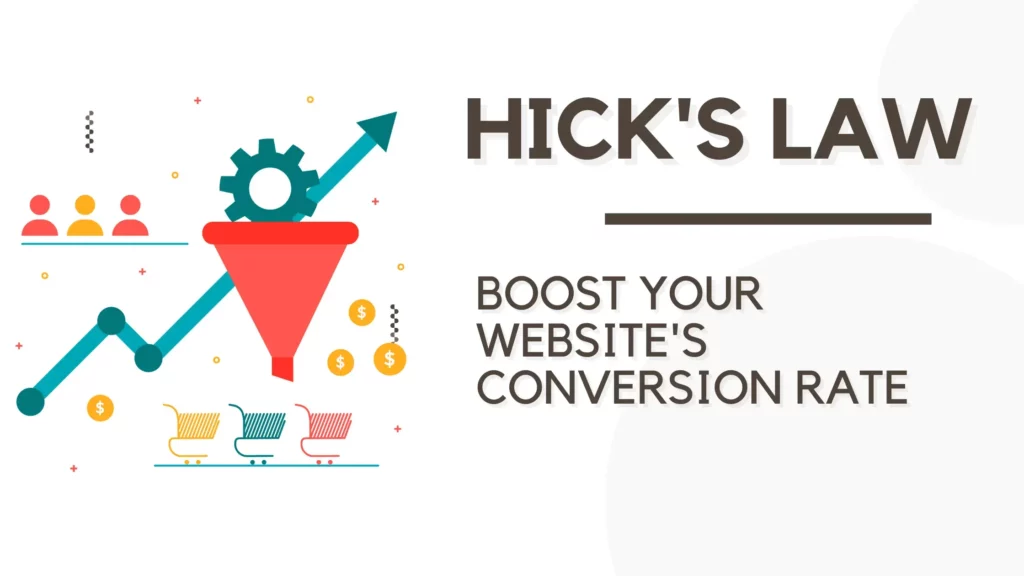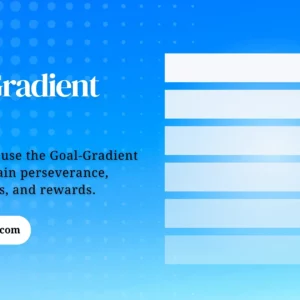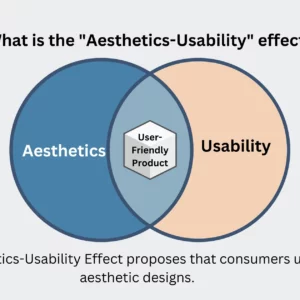Every click, interaction, and minute spent on your website in this digital world can enhance your brand. In the fast-paced realm of online presence, understanding the art of user experience is critical. Enter website conversion rate with Hick’s Law, a guiding concept that has withstood the test of time in the ever-changing world of online design.
As we continue on this quest to increase the conversion rate of your website, it is critical to grasp the historical significance of Hick’s Law. This rule was proposed by psychologists William Edmund Hick and Ray Hyman in the 1950s. It states that the time it takes a person to decide is equal to the number of options available. When translated to the digital domain, it becomes a valuable tool for improving UI. It also directs visitors to desired behaviors.
Join us as we dig into the interesting development of Hick’s Law. We will investigate how its principles expedite user decision-making. Also, lift your website’s conversion rates to unparalleled heights. It’s time to combine past knowledge with present innovations to create a digital experience. It captivates and converts with precision and delicacy.

What is Hick’s law:
Hicks Law or the Hick-Hyman Law states that the more options available for the people, the longer time is taken to make a decision. You can say that as decision-making time increases, so does the quantity of options. As a result, if there are more options, the increase in time becomes less significant. So, it proposes to reduce the elements in the website. The fewer the options, the easier the usage. Users must reach out to their required section in an instant. Hence, it eases the decision-making process and removes the not-so-essential elements or barriers. In other words, it offers a responsive design to the website. The increased time on a website can enhance the conversion rates.
RT = a + b log2 (n)
Where:
RT = reaction time
a = the time that is not involved with decision-making
b = an empirically derived constant based on the time it takes to process each option cognitively
log2 = logarithm function
(n) = the number of equally probable alternatives
Also read about Fitts’ law in UX
Website conversion rate with Hick’s Law:
As already discussed, Hick’s Law is an important tool that helps people make decisions more easily. Here’s how to use Hick’s Law to your advantage in UX design to improve conversion rates:
Reduce Choices:
According to Hick’s Law, having too many options can cause indecision. Users with a limited amount of alternatives can choose more frequently. It is applicable, particularly on important sites like landing pages and checkout screens. Also, if you want users to choose components that can cause conversions and avoid distractions.
Clear and Concise Navigation:
Use Hick’s Law in your website navigation. Simply maintain menus that are orderly, concise, and easy to understand. Users should understand their options without being overwhelmed by a multitude of choices. Provide a user-friendly navigation menu with a logical structure and a clear path.
Simplify Forms:
Forms that are too long or too technical might be an obstacle to conversion. Reduce the amount of fields and steps necessary for completion using Hick’s Law. Use smart defaults, auto-fill options, and inline validation to make form-filling easier.
Focused Calls-to-Action (CTAs):
Apply Hick’s Law to your CTAs by making them transparent, concise, and positioned. Avoid cluttering a page with several CTAs that may confuse the visitor. Use enticing and action-oriented wording in your CTAs to guide users to the targeted conversion action.
Progressive Disclosure:
Use progressive disclosure to expose information. Instead of bombarding consumers with too much information at once, give facts gradually as they proceed through the conversion funnel. This strategy is particularly beneficial for product pages and checkout procedures.
Optimize Loading Times:
Slow-loading websites can irritate visitors and increase bounce rates. Apply Hick’s Law by enhancing your website’s performance to ensure rapid loading times. To improve user experience, compress pictures, reduce HTTP requests, and employ browser caching.
Prioritize Content:
Hierarchically organize material, with the most critical information and activities at the top. Users should be able to recognize the significant aspects that contribute to the conversion process. Use visual signals like strong headlines or contrasting colors to bring attention to key text.
Mobile Optimization:
By reducing the user interface for smaller screens, you may apply Hick’s Law to mobile design. Prioritize information and activities depending on mobile user behavior, and make sure the conversion process on mobile devices is easy. By implementing Hick’s Law concepts into your UX design, you create a user-friendly environment that decreases cognitive load and makes decision-making more accessible for users. This simplified strategy might result in a more efficient and successful conversion procedure, thereby increasing your website’s conversion rate.
Streamline Navigation:
Keep the number of options in your website’s navigation menu to a minimum. A crowded menu with too many options might be overwhelming to users and make it difficult to locate what they’re looking for. To assist customers in rapidly understanding their options, utilize clear and succinct labels for navigation objects.
Simplify Forms:
If your website asks users to fill out forms, keep the fields as small as possible. Long and confusing forms may deter consumers from finishing the conversion procedure. Consider employing progressive disclosure tactics, presenting only the most important information at first and exposing additional facts as consumers go through the form.
Enhanced User Retention:
A web development company may enhance user retention rates. They can streamline the UX. Hence making it simpler for visitors to locate what they’re searching for. Users are more inclined to return to a website that offers a quick and easy surfing experience.
Applying Hick’s Law to Website Design
Designers may boost user satisfaction by using Hick’s law as a design guideline. They can do it without including too many links and text on a page. It will simplify the design and engage the user. The process makes it simpler for users to traverse a website and discover what they are searching for.
Here are a few examples where Hick’s Law is used:
Many businesses have used Hick’s Law in their website design to increase user navigation, decision-making, and overall UX. Here are a few instances of companies and their outcomes:
- Google Maps vs. MapQuest: In the 1990s, MapQuest’s interface was overloaded with multiple alternatives. In contrast, Google Maps adopted a more simplified and basic style, focusing on the most regularly used choices. This method lowered user decision time, resulting in a more efficient and pleasurable experience.
- Netflix: The worldwide streaming business has a massive content collection that might overload customers. Netflix mitigates by utilizing categories, customized suggestions, and an easy-to-use user interface. Netflix reduces the apparent number of options by segmenting material and proposing titles based on users’ previous viewing patterns. Hence lowering decision time and improving the user experience.
- Spotify: With its huge catalog of songs and podcasts, Spotify confronts a comparable challenge to Netflix. However, it adheres to Hick’s Law principles by using selected playlists, tailored daily mixes, and easy-to-navigate categories. This categorizing and predicting user preferences simplifies decision-making, contributing to a more pleasurable listening experience.
- Uber: When scheduling a trip, the ride-hailing app offers customers a streamlined set of options, such as destination, kind of service, and special requests. This straightforward and basic design reduces decision time, increasing the platform’s overall appeal and success.
Conclusion
Using Hick’s Law is like giving your website a decluttering tutorial. It’s the Marie Kondo of user experience. By eliminating decision fatigue and simplifying options, you’re simply telling your users, “Hey, we’ve got your back, and we’re not here to make your brain do gymnastics.”
So, if you want your website to be the Zen garden of the internet, follow the wise words of Hick and keep it simple. Remember, fewer choices equal happier users, and happier users equal a conversion rate that’s so high it’ll make your competitors wonder if you’ve got a secret potion hidden in your code. So, go forth, simplify, and let the conversions roll in like confetti at a celebration of user-friendly design. Your website visitors will thank you, and your conversion rates will be the life of the digital party. Cheers to simplicity and soaring conversion rates!






